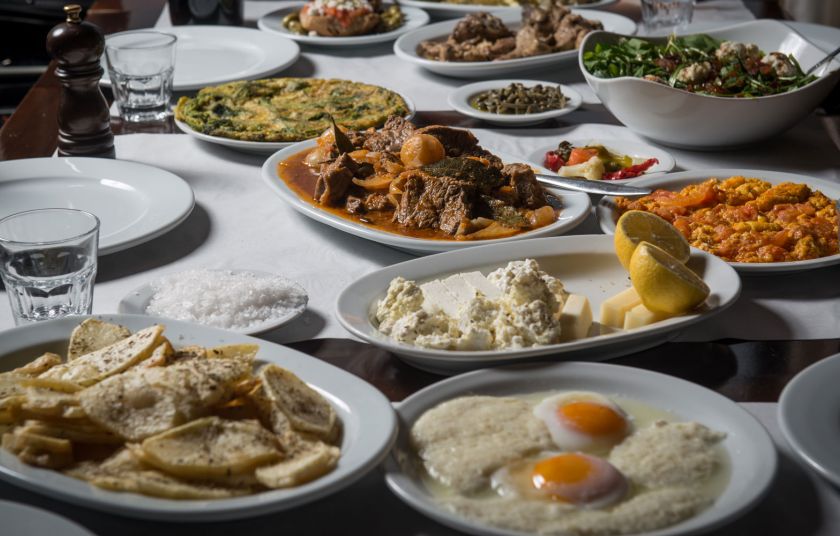The island of Crete, the largest in Greece, is renowned not only for its stunning landscapes and rich history but also for its exceptional cuisine. Rooted in centuries-old traditions and influenced by the diverse cultures that have inhabited the island, Cretan cuisine is a vibrant tapestry of flavors, ingredients, and cooking techniques. Delving into the culinary secrets of Crete reveals a world where food is not just sustenance but a deeply ingrained aspect of cultural identity and community life.
The Essence of Cretan Cuisine
At the heart of Cretan cuisine lies a profound respect for natural ingredients and simplicity. The island’s fertile soil and mild climate produce a bounty of fresh produce, herbs, and olive oil, which are the cornerstones of the local diet. The traditional Cretan diet, often hailed as one of the healthiest in the world, emphasizes vegetables, legumes, whole grains, and fish, with meat being consumed in moderation.
Olive Oil: Liquid Gold
Olive oil is the lifeblood of Cretan cooking. The island’s ancient olive trees produce some of the finest olive oils, characterized by their rich, fruity flavor and deep green color. Used generously in almost every dish, from salads to desserts, olive oil is a source of healthy fats and antioxidants.
- Extra Virgin Olive Oil: The highest quality olive oil, cold-pressed and unrefined, is a staple in Cretan households. It’s used in cooking, drizzled over dishes, and even consumed on its own as a health tonic.
- Marinated Olives: Olives are not only pressed for oil but also enjoyed whole, often marinated with herbs, garlic, and lemon.
Traditional Dishes and Techniques
Cretan cuisine boasts a variety of traditional dishes that have been passed down through generations. These dishes reflect the island’s agricultural abundance and the ingenuity of its people in using local ingredients.
Dakos: The Cretan Bruschetta
Dakos is a quintessential Cretan dish, simple yet bursting with flavor. It consists of a barley rusk, softened with a drizzle of olive oil and topped with ripe tomatoes, feta or mizithra cheese, and a sprinkle of oregano.
- Barley Rusks: Known as “paximadia,” these hard, twice-baked bread rusks are a Cretan staple. They are made from whole barley flour, providing a hearty and nutritious base for various toppings.
Kalitsounia: Savory and Sweet Pies
Kalitsounia are small pastries that can be either savory or sweet, showcasing the versatility of Cretan cooking. They are often filled with local cheeses, such as mizithra or anthotyro, and flavored with herbs like mint or fennel.
- Herb-filled Kalitsounia: These savory pies are filled with wild greens and herbs, reflecting the Cretan tradition of foraging for edible plants.
- Sweet Kalitsounia: For a dessert twist, they are filled with fresh cheese and sweetened with honey or dusted with cinnamon and sugar.
Slow-Cooked Goodness: Tsigariasto and Antikristo
Cretan cuisine often involves slow-cooking methods that enhance the flavors and tenderness of the ingredients.
- Tsigariasto: A traditional lamb dish, tsigariasto involves slow-cooking lamb pieces in olive oil until they are incredibly tender. The meat is typically seasoned with salt, pepper, and sometimes a hint of lemon, allowing the natural flavors to shine.
- Antikristo: This ancient method of cooking lamb involves skewering the meat on wooden stakes around an open fire. The lamb is cooked slowly, absorbing the smoky flavors, resulting in exceptionally succulent and flavorful meat.
The Role of Herbs and Wild Greens
Herbs and wild greens, known as “horta,” play a significant role in Cretan cuisine. These plants are often foraged from the wild, adding unique flavors and nutritional benefits to dishes.
- Wild Greens: Varieties such as stamnagathi (spiny chicory) and vlita (amaranth greens) are boiled or steamed and served with olive oil and lemon.
- Herbs: Oregano, thyme, rosemary, and mint are commonly used, infusing dishes with aromatic complexity.
Sweet Endings: Traditional Desserts
Cretan desserts are typically simple, emphasizing natural sweetness and wholesome ingredients.
- Sfakianopita: This is a traditional pie from the region of Sfakia, filled with soft cheese and drizzled with honey.
- Loukoumades: These honey-soaked doughnuts are a popular treat, crispy on the outside and soft on the inside, often sprinkled with cinnamon and sesame seeds.
The Social Aspect of Cretan Cuisine
Cretan food is deeply intertwined with social and communal activities. Meals are often shared events, bringing families and friends together. The preparation of food, particularly for festivals and celebrations, is a collective effort that reinforces community bonds.
- Feasts and Festivals: Traditional feasts, or “glendia,” feature an abundance of food, music, and dance, celebrating both religious and secular occasions.
- Wine and Raki: Local wines and raki, a grape-based spirit, are integral to Cretan hospitality. They are enjoyed during meals and social gatherings, symbolizing friendship and conviviality.
Conclusion
The culinary secrets of Crete are a testament to the island’s rich heritage and the deep connection between its people and their land. Through a focus on fresh, local ingredients and time-honored cooking techniques, Cretan cuisine offers a delicious and nutritious way of eating that has stood the test of time. As one explores the flavors and traditions of Crete, it becomes clear that food is not just a means of nourishment but a vital expression of cultural identity and community spirit.


